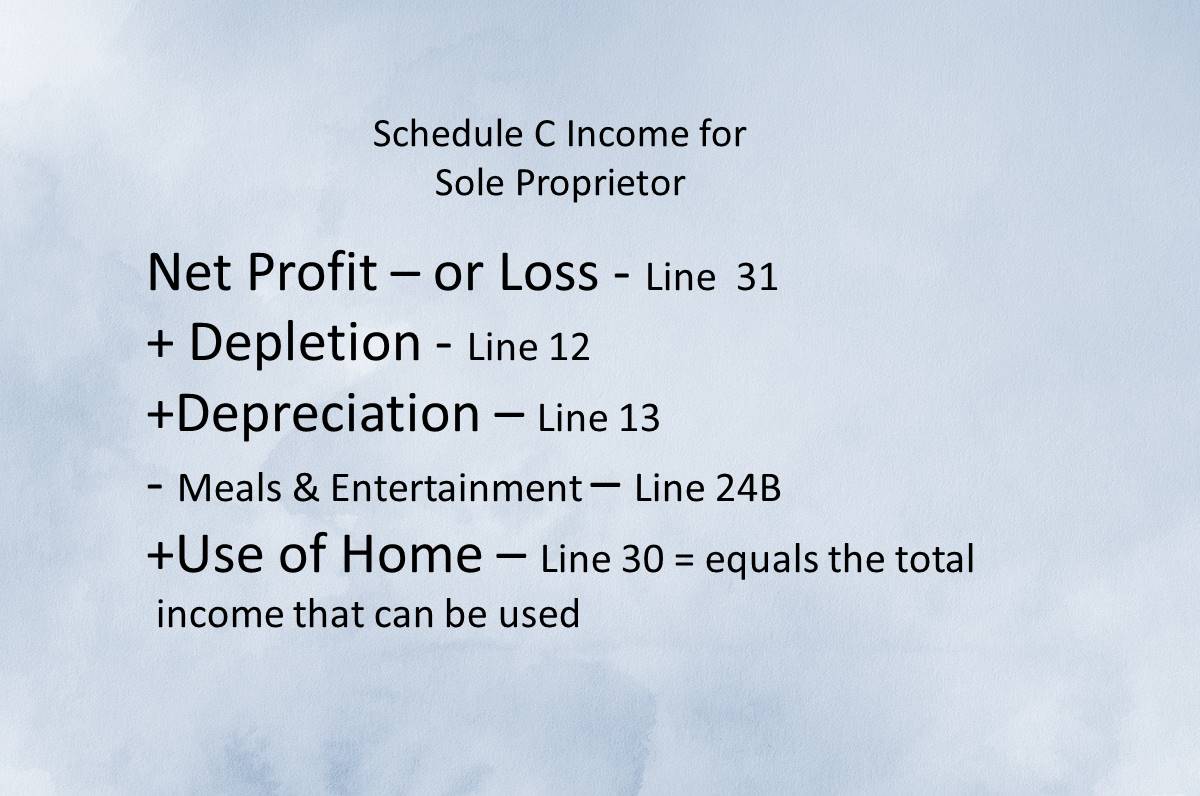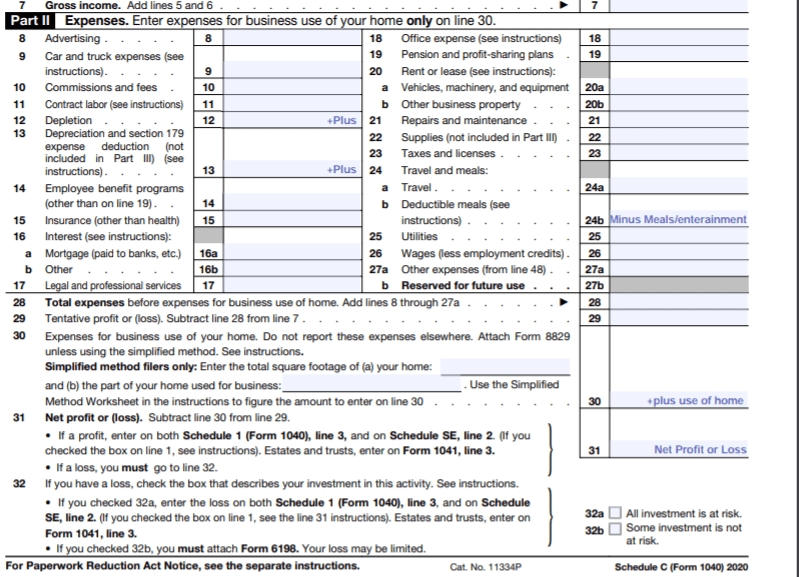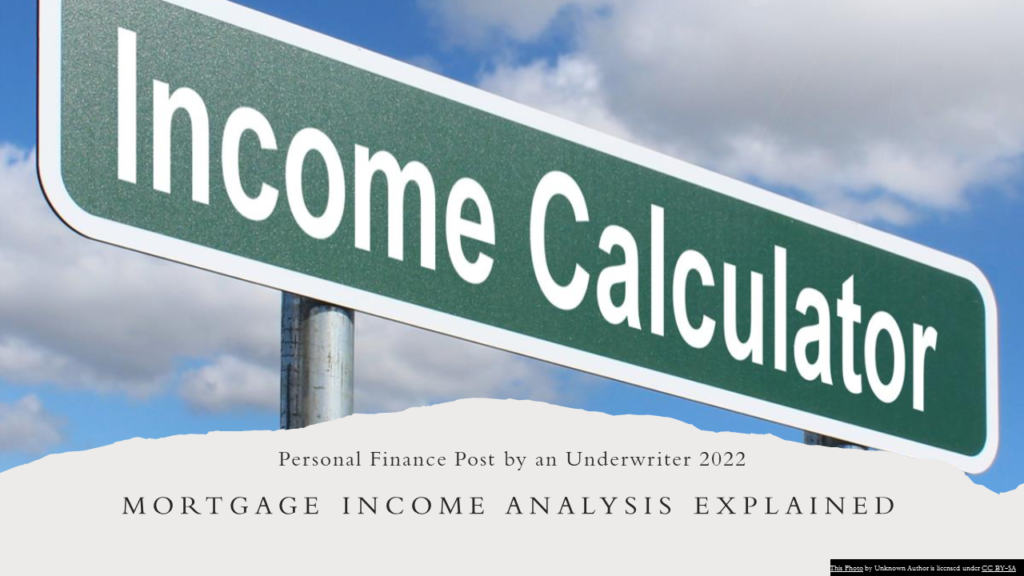Post updated 11-28-22
Self-employed Income For Mortgage- should be understood before applying for a loan.
…the minimum requirements are based upon the type of self-employment, how long the company has been in business, and the stability of the company. Then, of course, the debt-to-income ratio.
When Is The Applicant Considered Self-Employed
In mortgage lending, an individual is considered self-employed if he/she owns more than 25% of a business. This income must be considered stable and ongoing for at least two years.
Self-Employed income analysis in mortgage lending requires a history of being self-employed to be used as stable ongoing income. This means that usually a 24-month history is required as a general rule.
If an individual has only been self-employed for three months out of the current year, and they are applying for a loan, it is unlikely that this income will sufficient. This is because there is no history to determine that the company is viable, the income stream is stable, nor if it is likely to continue in the foreseeable future.
Self-Employed Facts That Are Considered
There are several factors considered, and I will try to sum up some of these because it could get lengthy.
- The underwriter must always look at the borrower’s past income history, employment history, and self-employment history.
- The borrower has been in the same line of work for many years. He/she becomes self-employed in another field of work during the past month. In this situation, there is no justification for the approval of the loan.
- There must be some history and likelihood of continuation.
- If there is little experience in his/her new field of self-employment, there is no way to determine whether the income stream will continue.
In most instances in the first year of self-employment, many people write off everything as loss or expenses, so even though the income was there, the bottom line does not provide sufficient income to qualify. This presents a situation in which there is not a single thing the mortgage underwriter can do about this kind of income situation.
Less Than Two Years Self Employment Circumstances
When the automated underwriting system, (AUS) is utilized in the underwriting process of mortgage lending, there are times when the loan may be approved with less than two years of self-employment.
(Most of the agencies use the AUS, but not on every product or loan.) It will depend upon the strength of the loan, credit scores, assets, and the entire financial status.
*Also, note that if a borrower has been in the same line of work for years at another company, the loan may be considered based on the year-to-date earnings, and other factors.
Usually, it will take the 700 plus score, and a substantial amount of liquid assets to make a file acceptable without a history. There have been approvals when the AUS only asked for the prior year’s (most recent year) personal tax returns.
Again, this is all dependent upon the entire file evaluation. There are times when two (2) years of personal tax returns and two (2) years of business returns are required along with a year-to-date profit and loss statement with financials.
Sole Proprietorship:
A sole proprietor is one who files 1040- schedule C income, profit, and loss from a business. He does not file separate business returns only schedule C in personal tax returns.
The expenses, depreciation, and depletion are deducted from the gross income (if applicable). Depreciation, depletion, and home use may be added back. Normally, the past 24 months’ tax returns are required, and again; this does depend upon the AUS findings.
The underwriter has a couple of income analysis worksheets to use; cash flow analysis and comparative income analysis. In schedule C income calculation, it amounts to using the bottom line net income from business after expenses plus depreciation for the past two years.
The underwriter has a couple of income analysis worksheets to use; cash flow analysis and comparative income analysis. In schedule C income calculation, it amounts to using the bottom line net income from business after expenses plus depreciation for the past two years.
Here is an example of a Sole Proprietor-Schedule C- Self-Employed Evaluation In
Mortgage Lending…
These Explanations Are Related To Self-Employed Income For Mortgages for
a company that had either registered as a Partnership, S-Corp, Corporation, or LLC
Partnership:
A partnership is an arrangement between two or more people who together have pooled their assets and their abilities to form a business. They share profits and losses. It can be a Limited Partnership or a General Partnership.
General Partnership:
Each partner is liable for running the business, personally liable for the debts of the entire business, and is responsible for the actions of the other partners of the business unless it is specified in the partnership agreement.
A General Partnership is dissolved upon the death, withdrawal, or insolvency of any partner but the responsibility of the creditors exists even if the partnership is dissolved. The partnership assets are applied to the creditor’s obligations first and then the individual partner’s assets are applied to the partner’s liabilities.
Limited Partnership:
A Limited Partnership operates differently than a General Partnership. Each partner is not typically responsible for running the business on a daily basis and they have limited decision-making ability. There is usually one General Partner who is personally liable for the debts of the entire business.
A Limited Partnership is not dissolved at any one partner’s death. These partnerships are sometimes formed for tax shelters, therefore, Schedule K-1 will show a loss instead of a profit. These partners file the IRS 1065 with schedule K-1, which flows over to their IRS 1040’s personal tax returns, and the loss or profit is taken into consideration for calculating income.
“S” Corporation and Corporation
The difference between the Corporation and the “S” Corporation:
“S” Corporations pass gains and losses on to their shareholders, who are then taxed at the tax rates for individuals. The “S” Corporation uses the IRS from the 1120S (U. S. Income Tax Return for an S Corporation and the Shareholder’s share of income, credits, and deductions; (Schedule K-1) for filing federal income tax returns for the corporation.
The shareholder’s (partner in the S Corp) share of income (or loss) is carried over to the Supplemental Income and Loss (Schedule E to IRS From 1040, personal
tax returns).
tax returns).
Ordinary income from the “S” Corp may be used to qualify the borrower only if the borrower’s business has a history of receiving such distributions on a consistent basis. If the income is stable and consistent, the earnings trends are positive, and the business has adequate liquidity to support the withdrawal of cash without a negative effect on the business.
To determine the ability of the Corporation to have this withdrawal, the history of distributions must be reviewed, as the financial and liquidity positions.
Normally a 2-year history is analyzed. AUS (automated underwriting system) will determine if business returns are required and the number of years along with the client’s personal 1040 returns.
Normally a 2-year history is analyzed. AUS (automated underwriting system) will determine if business returns are required and the number of years along with the client’s personal 1040 returns.
Corporation:
A corporation is a state-chartered legal entity that exists separately and distinctly from the owners, who are called stockholders or shareholders. It is the most flexible form of business operation for purpose of obtaining capital.
A corporation can sue; be sued; hold, convey, or receive property; enter into contracts under its own name, and not dissolve when its ownership changes.
There are two types of corporations—publicly owned (widely held) corporations and privately owned (closely held) corporations. Because more than 50% of the outstanding stock of a privately owned corporation is owned directly or indirectly by no more than five people, the corporation has little or no access to public funds and must raise capital through institutional financing.
Although legal control of the corporation rests with its stockholders, they typically are not liable for the day-to-day operations of the business. Since they elect a board of directors to manage the corporation and delegate responsibility for the day-to-day operations to the directors and officers of the company, it is not necessary for their daily involvement.
Although legal control of the corporation rests with its stockholders, they typically are not liable for the day-to-day operations of the business. Since they elect a board of directors to manage the corporation and delegate responsibility for the day-to-day operations to the directors and officers of the company, it is not necessary for their daily involvement.
The corporation’s board of directors or other entities that have a significant financial interest in the business determines the distribution of profits earned by the business.
However, the profits are usually filtered down to the owners in the form of dividends. Since a stockholder is not personally liable for the debts of the corporation, losses are limited to his or her individual investment in the corporation’s stock.
Corporations must report income and losses on IRS Form 1120 and pay taxes on the net income. The corporation distributes profits to its shareholders in the form of dividends, which it reports on 1099 DIV and flows to IRS 1040 for the owner.
Corporations must report income and losses on IRS Form 1120 and pay taxes on the net income. The corporation distributes profits to its shareholders in the form of dividends, which it reports on 1099 DIV and flows to IRS 1040 for the owner.
Limited Liability Company (LLC)
Explanation and Documentation
This type of business is formed to offer the members-owners the tax effects of a partnership and the limited liability of a corporation. The members of the LLC (or their assigned managers) can sign contracts, sell assets, and make other business decisions.
The LLC operating affidavits may set out specific divisions of power among the member-owners (or managers). Although the owners generally have limited liability, there may be occasions they are required to personally guarantee some of the loans that the LLC obtains. Profits from the operation may be distributed to managers.
The LLC reports its profits or losses on the IRS 1065, Schedule K-1, however, the LLC pays no taxes on its income. Each member-owner pays the taxes individually from the income reported on Schedule K-1. In other words, the tax liability of a Limited Liability Company will flow over to the member’s IRS
1040 for tax purposes.
The LLC reports its profits or losses on the IRS 1065, Schedule K-1, however, the LLC pays no taxes on its income. Each member-owner pays the taxes individually from the income reported on Schedule K-1. In other words, the tax liability of a Limited Liability Company will flow over to the member’s IRS
1040 for tax purposes.






Yes, you are absolutely correct.your blog is giving very useful knowledge for all, i'm sharing your information to all friends.
If you Want more details Kindly Visit spot cash credit card
Thanks Yashika for stopping by and leaving a comment, I appreciate it. Hope you enjoyed the self-employment analysis article.